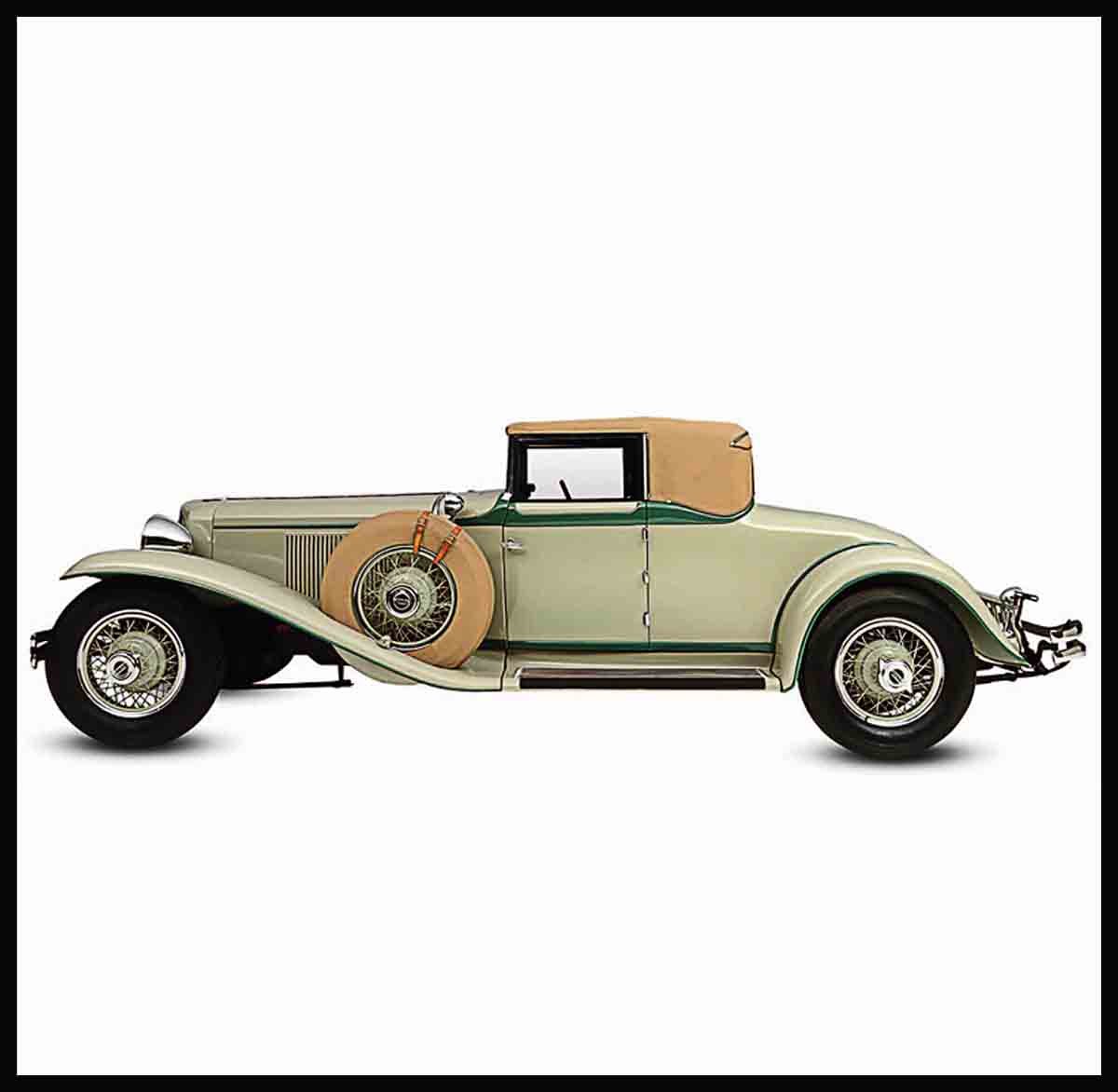
Hollywood Coupes and Glorious Roadsters
The Roaring Twenties was a time of great style and decadence among the moneyed classes, where traditional wealthy families began to be outnumbered by newly rich film stars, business tycoons, and gangsters. The glamour and excitement of their lifestyle was reflected in the cars built for them, in Europe and the United States, displaying flamboyant bodies, shiny nickel or chrome plating, and bright colors.
Cunningham touring car, 1916
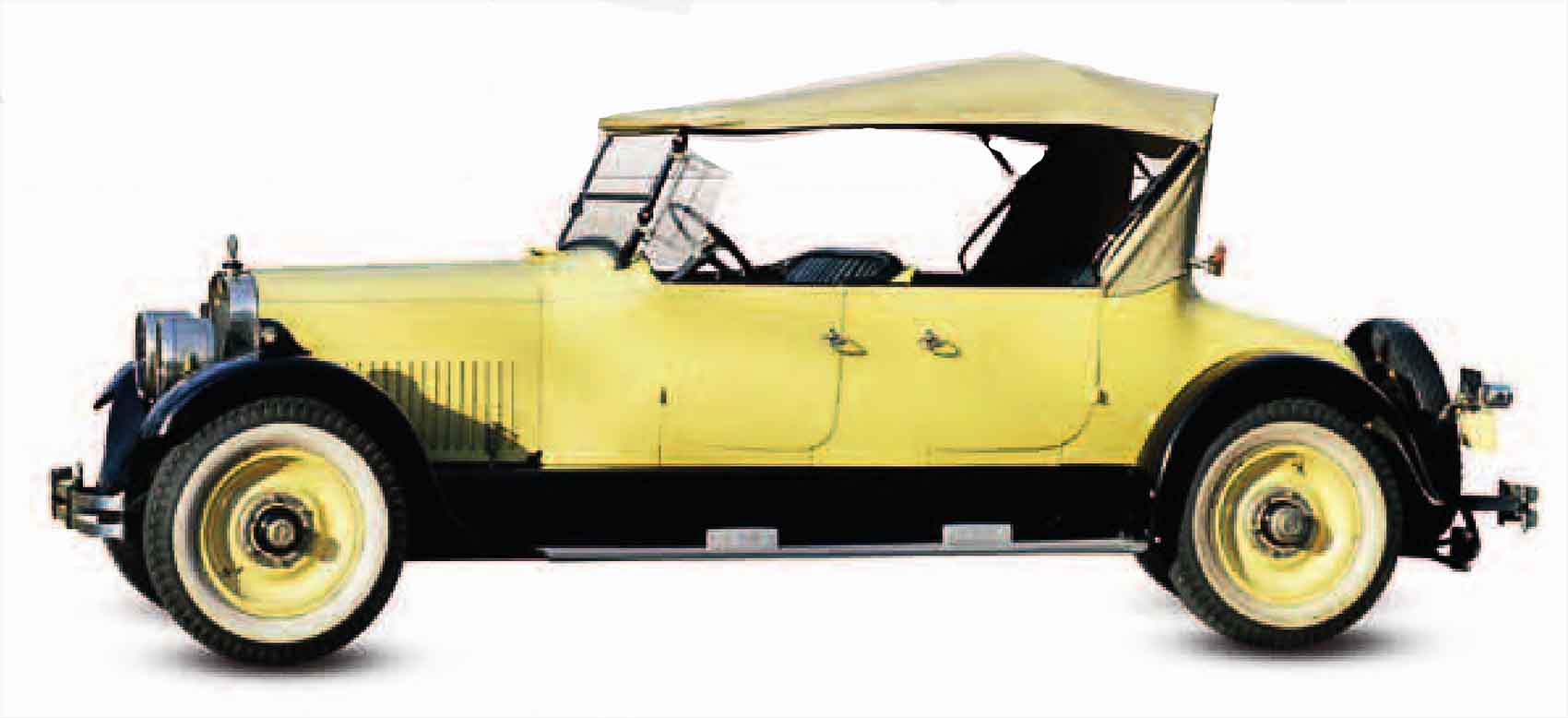
| Origin | USA |
| Engine | 7,200 cc, V8 |
| Top speed | 95 mph (153 km/h) |
Exceptionally modern-looking at the time of its introduction, and boasting one of the first production V8 engines, the Cunningham attracted celebrity buyers and was produced until 1933.
Stanley Model 735, 1920
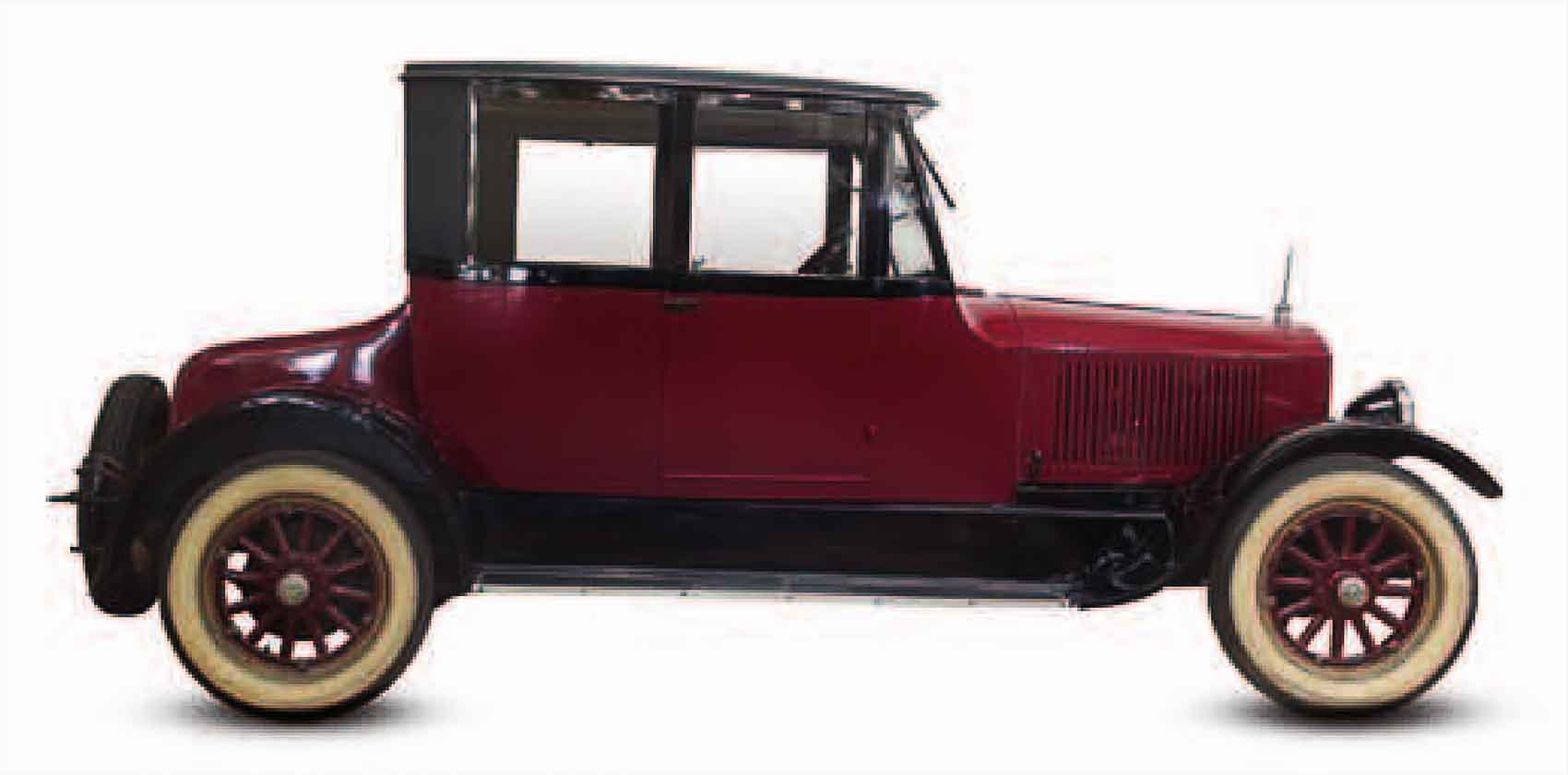
| Origin | USA |
| Engine | 2,059 cc, straight-two steam |
| Top speed | 60 mph (97 km/h) |
At four times the price of a Ford Model T and with limited power output, the Stanley steam car was an anachronism by the 1920s. Nevertheless, it stayed in production until 1924.
Bentley Speed Six, 1928
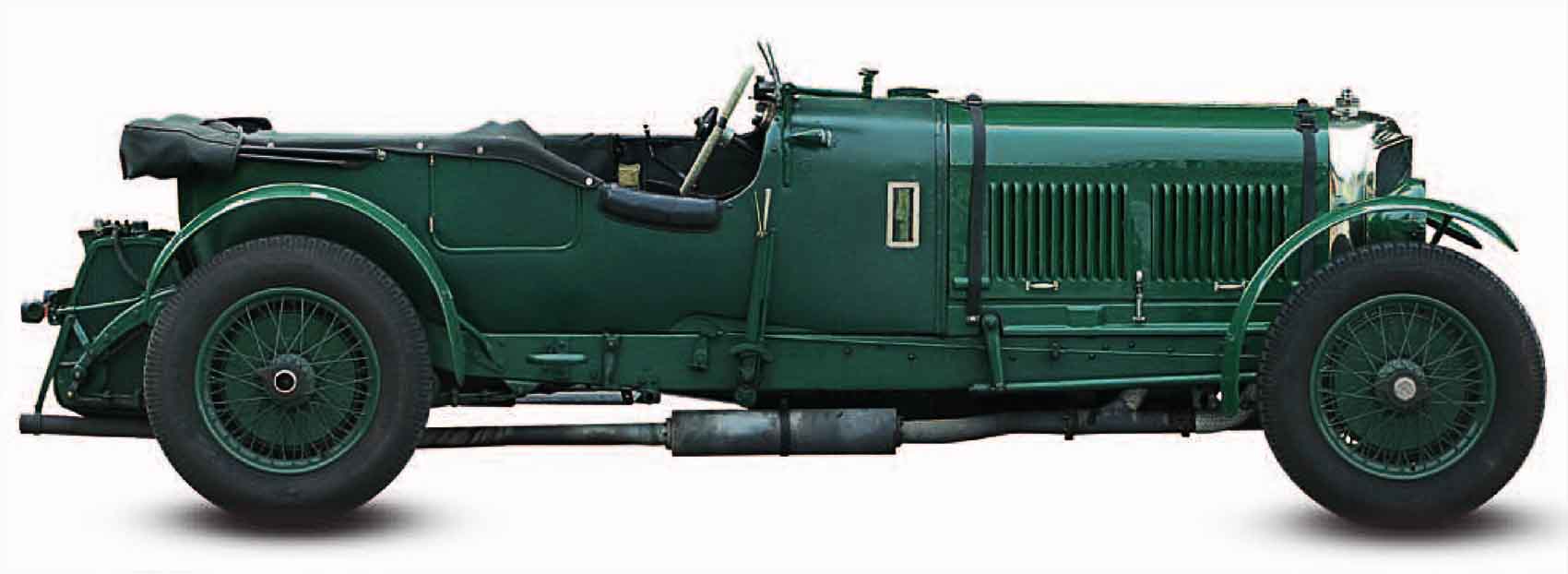
| Origin | UK |
| Engine | 6,597 cc, straight-six |
| Top speed | 100 mph (161 km/h) |
Developed from the 1924 Standard Six, this two-time Le Mans winner was W.O. Bentley’s most successful racing car. With its effortless performance, it also made a sensational road car.
Cord L-29, 1929
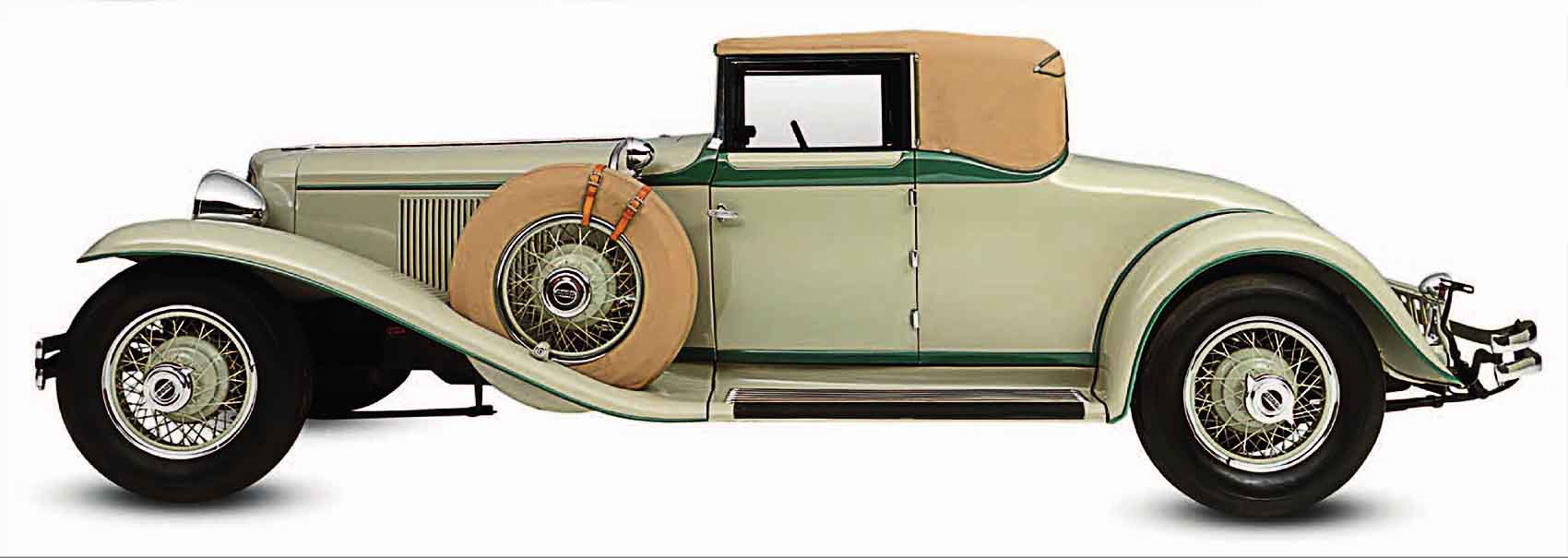
| Origin | USA |
| Engine | 4,884 cc, straight-eight |
| Top speed | 77 mph (124 km/h) |
The remarkable L-29 used the Lycoming engine turned around to drive the front wheels. E.L. Cord’s design was a long, low build without an intrusive transmission tunnel.
Ford Model T roadster, 1923
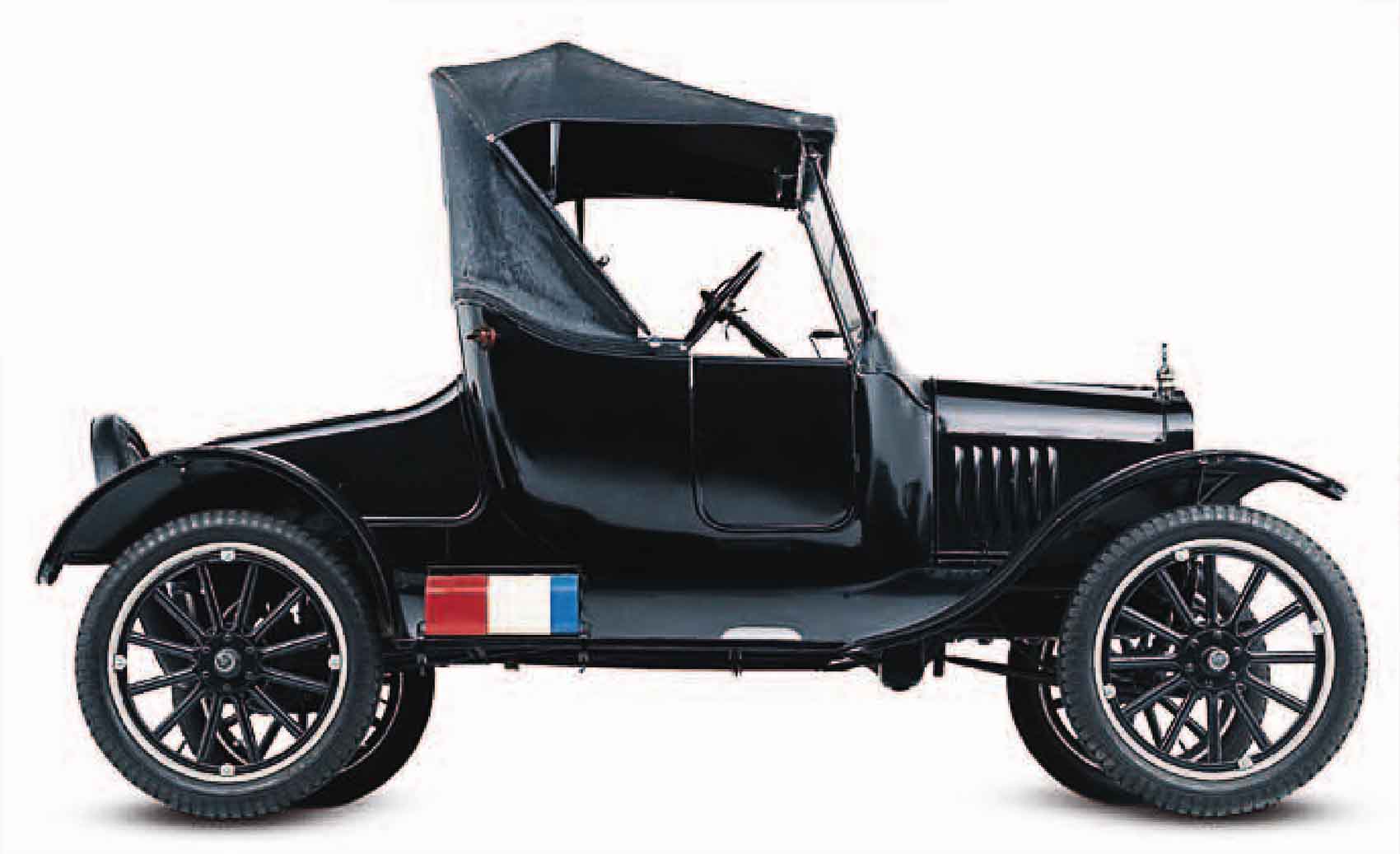
| Origin | USA |
| Engine | 2,878 cc, straight-four |
| Top speed | 45 mph (72 km/h) |
Ford began improving the Model T in 1923 in response to market challenge from Chevrolet. New styling touches included a raked windscreen and demountable wheels
Ford Model A, 1927
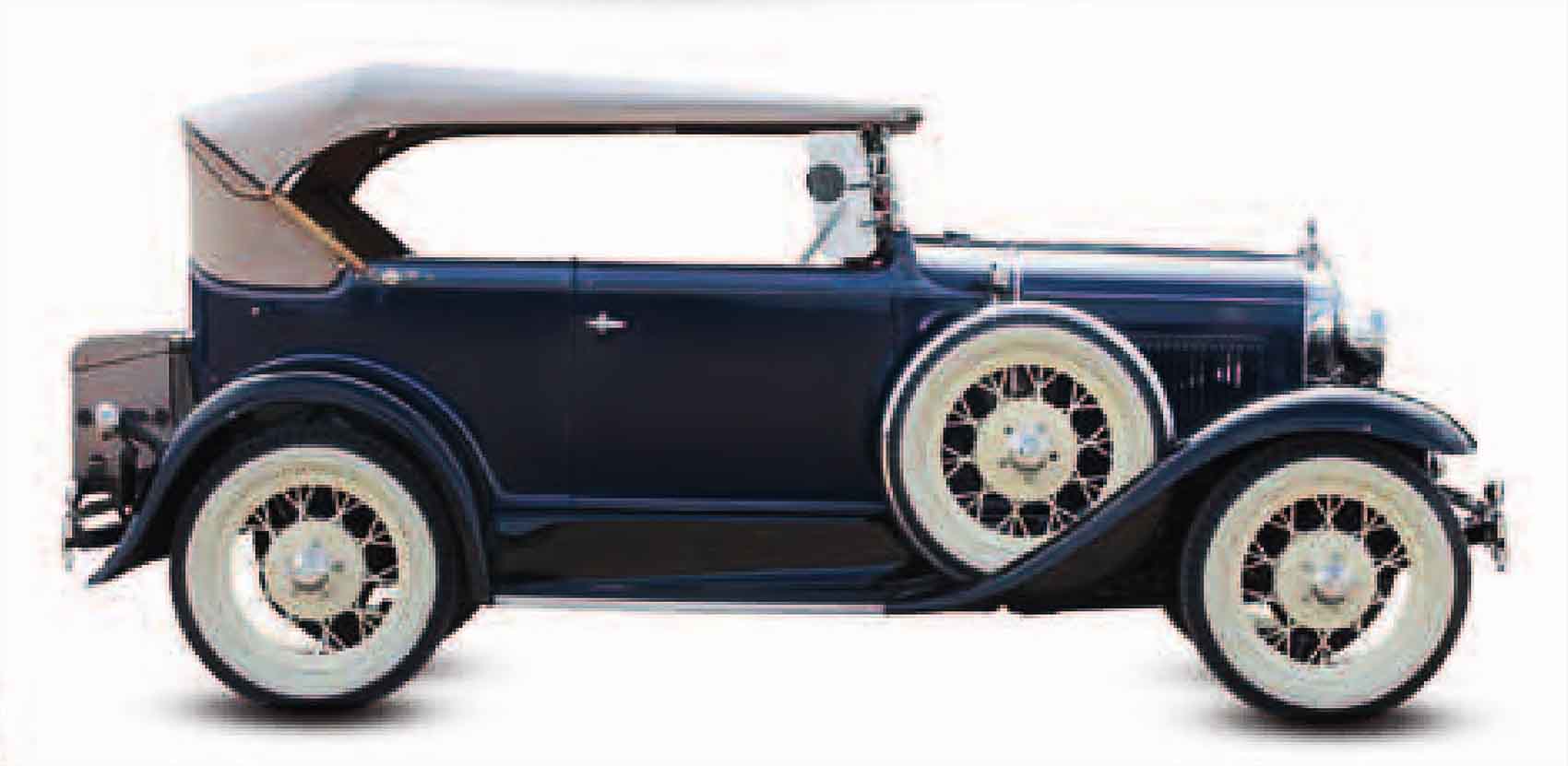
| Origin | USA |
| Engine | 3,285 cc, straight-four |
| Top speed | 60 mph (97 km/h) |
The Model A was a mass-production car for middle America, but it still managed to exude gangster-movie style. It was given strong body colors and whitewall tires.
Woods Dual Power, 1917
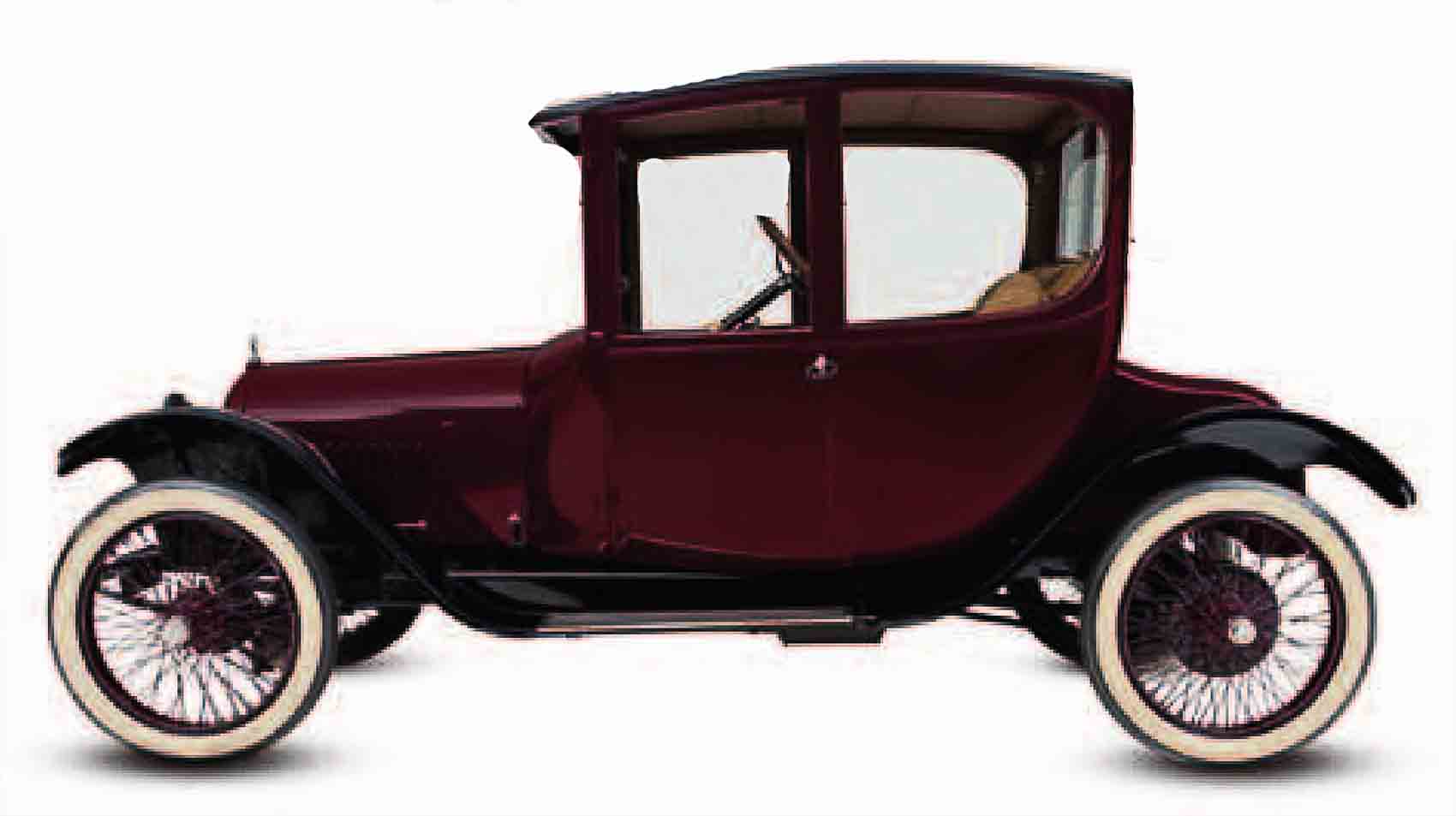
| Origin | USA |
| Engine | 1,560 cc, straight-four + electric motor |
| Top speed | 35 mph (56 km/h) |
The world’s first gas/electric hybrid used battery power up to 20 mph (32 km/h), then added its engine. It had no gearbox and utilized its engine and regenerative braking to charge its battery.
Lincoln V8, 1921
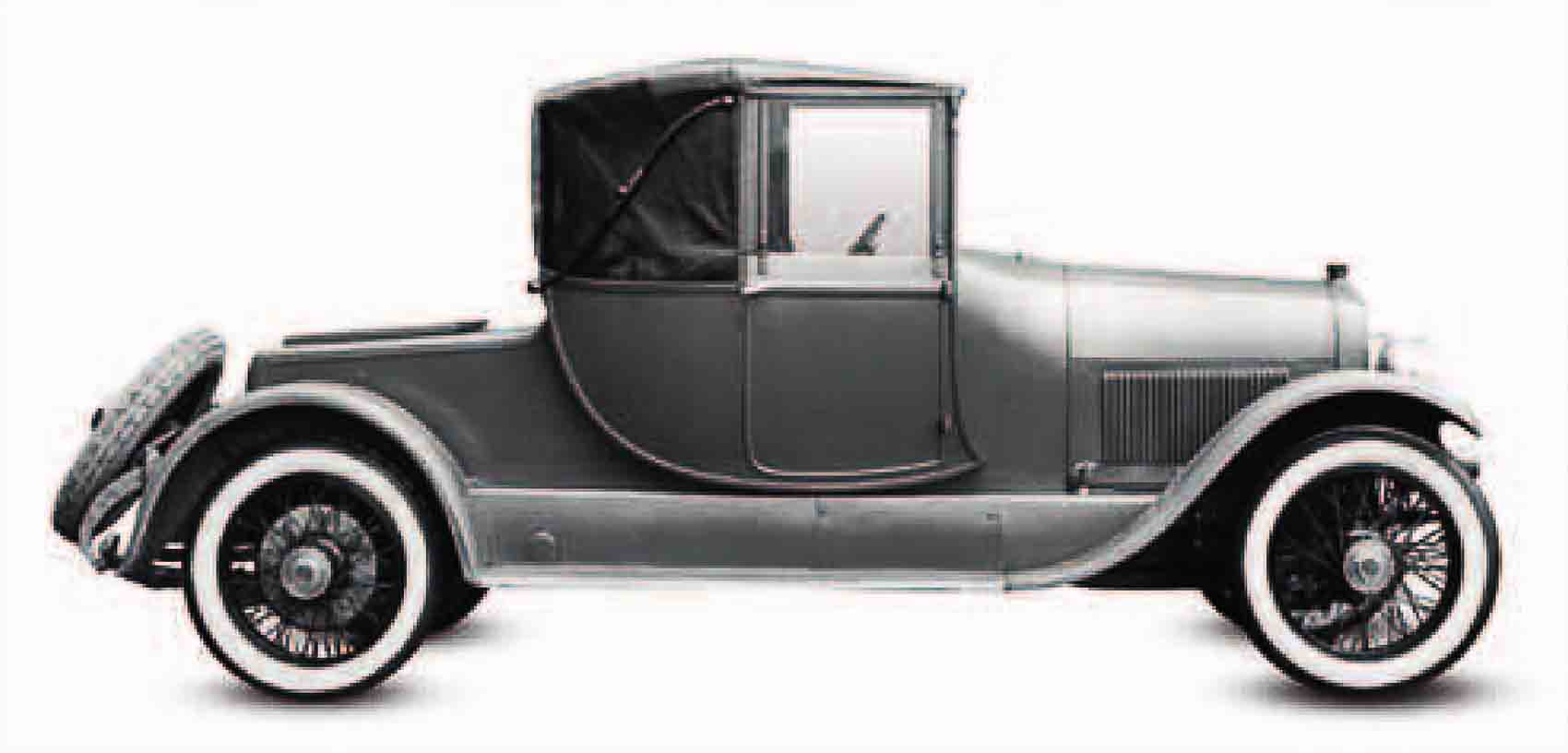
| Origin | USA |
| Engine | 5,861 cc, V8 |
| Top speed | 88 mph (142 km/h) |
Henry Leland left Cadillac to found Lincoln, named after his hero Abraham Lincoln. Henry Ford bought the company in 1922, inheriting this upmarket car that rivaled Cadillac.
Chevrolet Superior Coupe, 1925
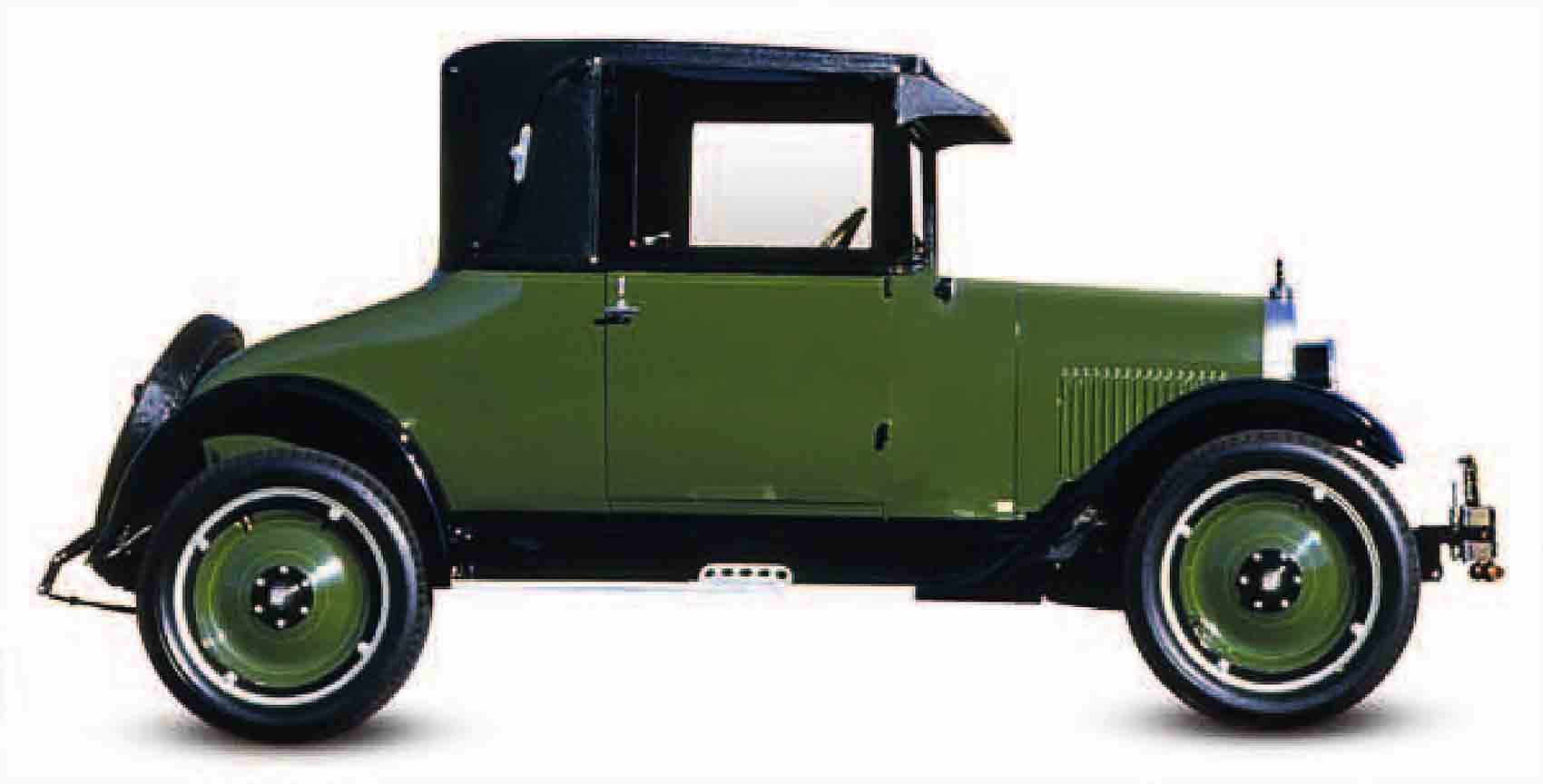
| Origin | USA |
| Engine | 2,804 cc, straight-four |
| Top speed | 56 mph (90 km/h) |
William Durant wanted to beat the Model T Ford with this car. Though it could not compete on price, it was a fine car and increased Chevrolet sales by a handsome 70 percent.
Plymouth Model U Coupe, 1929
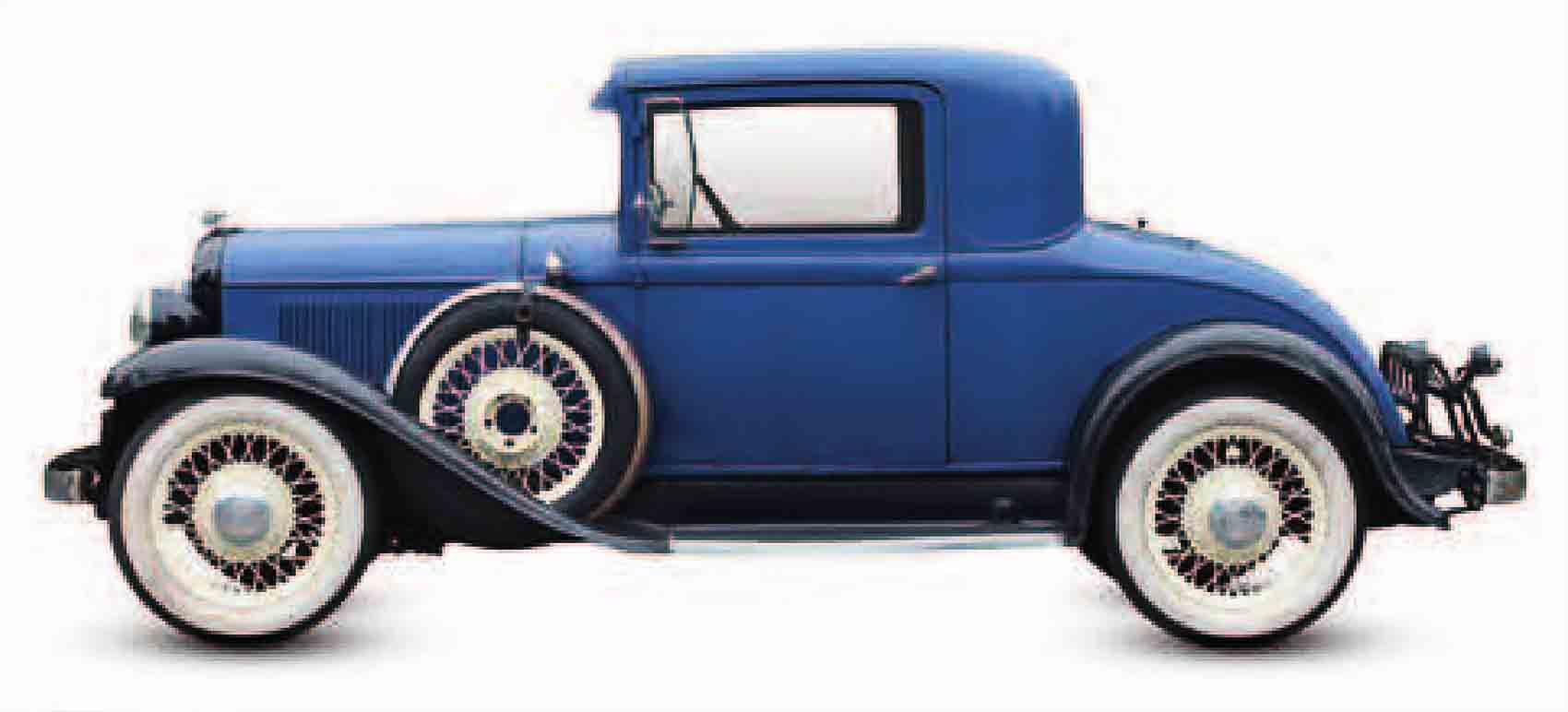
| Origin | USA |
| Engine | 2,874 cc, straight-four |
| Top speed | 60 mph (97 km/h) |
Chrysler launched the Plymouth in 1928 as a budget-priced car, boasting special features that included hydraulic brakes. It was well timed, and kept Chrysler solvent through the Depression.
La Salle Model 303, 1927
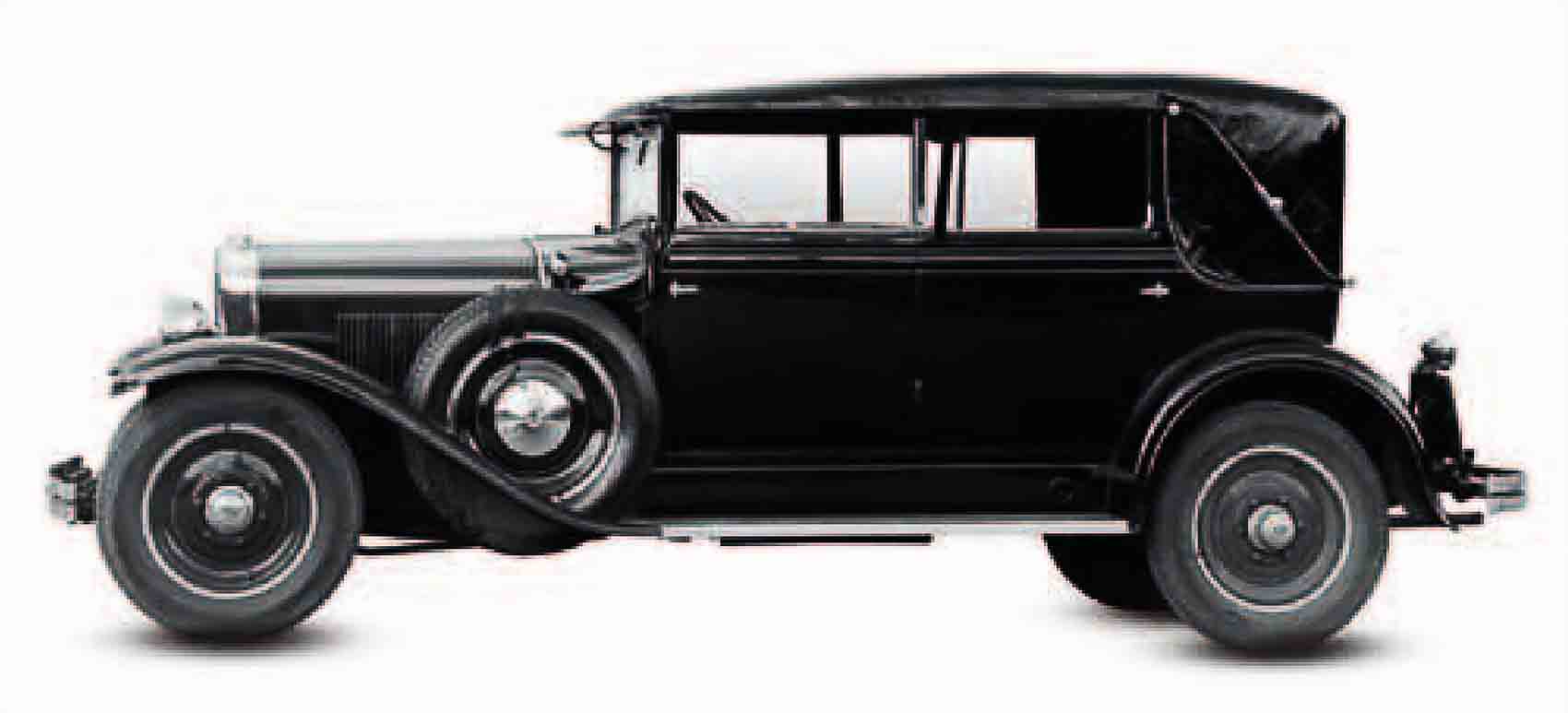
| Origin | USA |
| Engine | 4,965 cc, V8 |
| Top speed | 80 mph (129 km/h) |
General Motors introduced La Salle in 1927 as a way to sell more Cadillac-style cars without devaluing Cadillac’s exclusivity. An instant hit, it was a fine car in its own right.
Kissel straight-eight Speedster, 1927
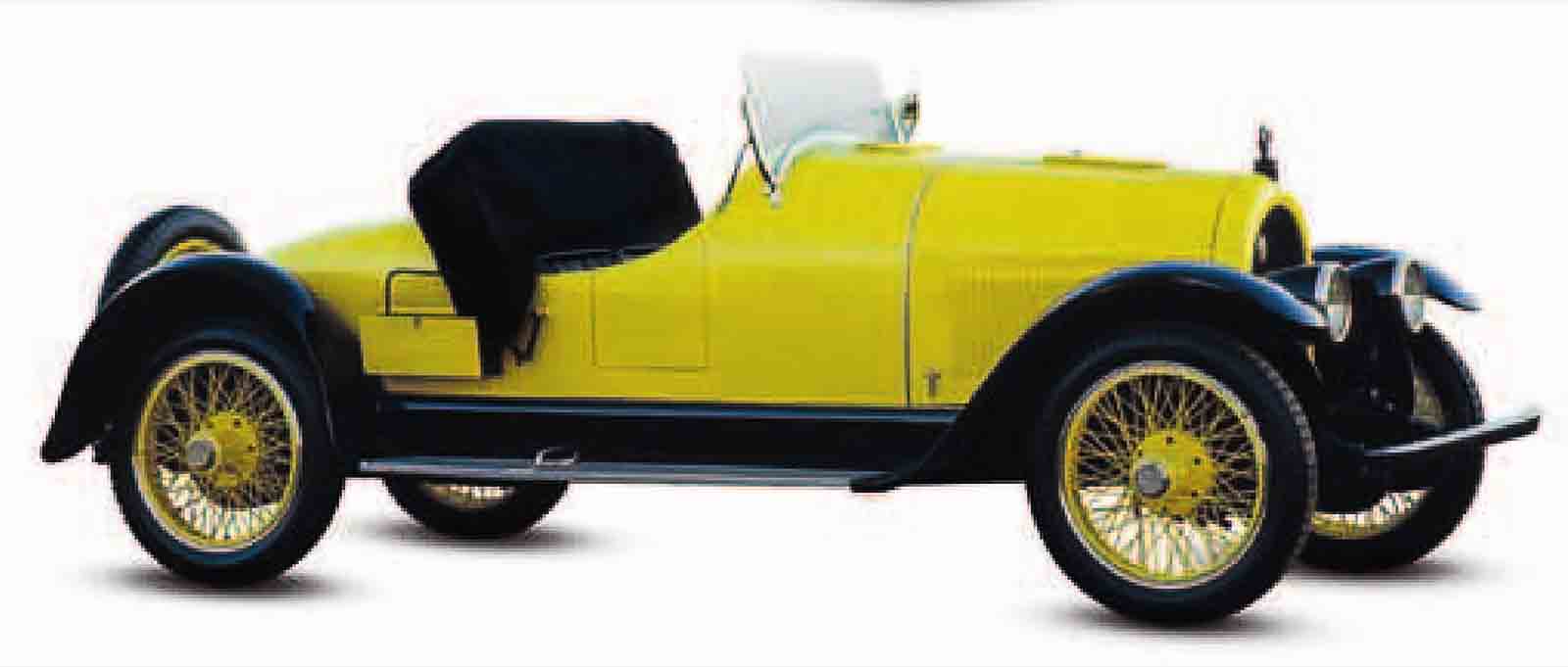
| Origin | USA |
| Engine | 4,670 cc, straight-six |
| Top speed | 78 mph (125 km/h) |
This Kissel was designed to race against the Stutz Bearcat and Mercer Race about. It stayed in production for eight years.
Lancia Lambda, 1922
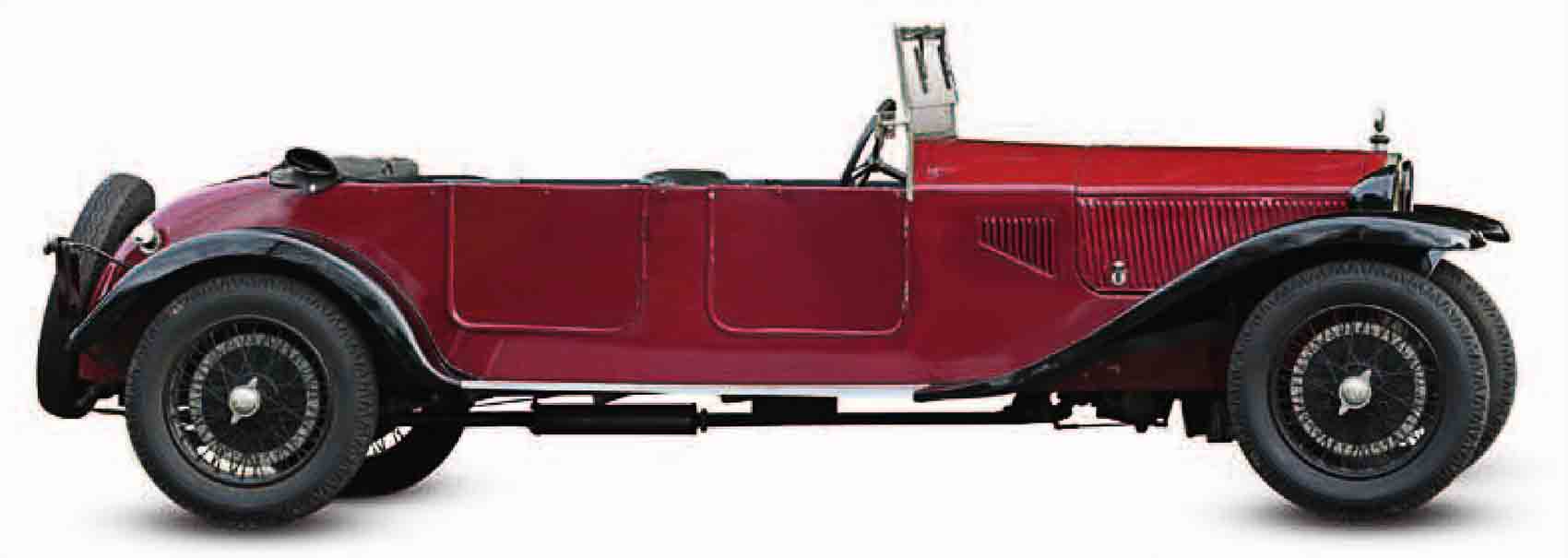
| Origin | Italy |
| Engine | 2,120 cc, V4 |
| Top speed | 70 mph (113 km/h) |
One of the most advanced cars of its day, the long, low Lambda boasted a monocogue body, overhead-camshaft V4 engine, and independent front suspension.
Duesenberg Model J, 1928
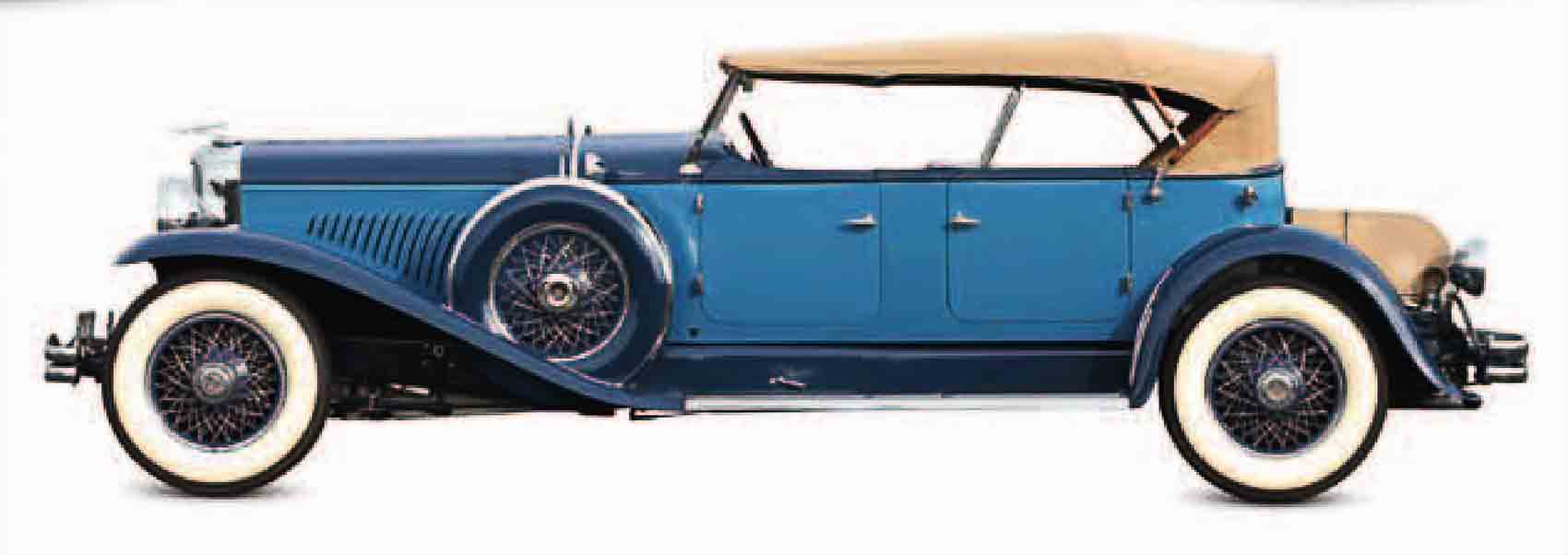
| Origin | USA |
| Engine | 6,882 cc, straight-eight |
| Top speed | 115 mph (185 km/h) |
The Model J was bigger, faster, more elaborate, more refined, and more expensive than any other U.S. car of the 1920s. It was powered by a double-overhead-camshaft engine.
It is a quote. The Definitive Visual History Of The Automobile 2011




